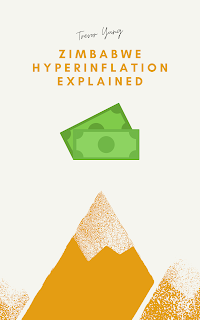How Ancient Emperors Mantained Power and Control:
Emperor Hadrian was the 14th Roman emperor who came to power when he was aged 41, ruling for 20 years. (From August 117 to July 138) Hadrian was a strict, cunning and imposing leader often finding clever ways to get what he wanted. Emperor Shi Huang Di was a Chinese emperor ruling for 26 years. He came to power aged 38 and was a cruel but also clever emperor building a wall spanning across his northern border. Both of these men used different tactics to keep power and control. For example, Emperor Hadrian used a strict punishment system to keep everyone in line and Emperor Shi Huang Di put criminals in the army to discipline them.
Both emperors used armies to keep power and control. For example Emperor Hadrian used the army to deliver messages to other officials around the country, Emperor Hadrian also used the army to calm down revolts and suppress enemies. Likewise, Emperor Shi huang Di used the army to discipline robbers and miscreants by putting them into the ranks. He also used the army to keep control over his many states and counties. Both of the armies had organized forces, advanced techniques, sophisticated weapons and state of the art war machines. Namely the tortoise formation developed by the Romans, Ballistas (a huge catapult used for hurling stones.) and the pilum. (a light spear developed by the Romans) The Chinese on the other hand made weapons such as the cannon, crossbow and more.
Ancient Emperors maintained power and control through the use of defensive fortifications and walls. For example, the Chinese built the Great Wall of China to protect their northern border from raiders. Furthermore, a lack of natural defences in the north made man made defenses a necessity. When the Chinese built the Great Wall, they put in meticulous effort in making the width and height the same. They also added in small but beneficial details such as holes for archers to shoot out from and ramparts for extra military support. The width of the wall was around 8-10 meters and allowed for 2 chariots or 8 soldiers to pass. Moreover, the Chinese built gates every 1 kilometer or so to make it more convenient for travelers and traders to pass. The wall also allowed the Chinese to control trade and the supplies coming into China, doing so decreased illegal goods and deterred smugglers. Ancient Emperors maintained power and control through the use of defensive fortifications and walls. For example, the Roman Emperor Hadrian built Hadrian's wall in Britain. As the result of the lack of natural defences in Roman Britannia, man-made defenses became a necessity. Most of the Roman empire's borders were protected by natural defenses such as mountains, but Hadrian's Achilles heel was the British front. Thus Emperor Hadrian built a massive wall system stretching across the British border. Hadrian then further ensured that the wall was secure by building a four layer defense. (trench, rampart, ditch and a stone wall) Watchtowers and forts were also built across the wall to aid in defending against an enemy attack. The wall also had gates to make ease for travelers and traders. In terms of trade, the wall was valuable to the Romans as it allowed them to monitor trade and to regulate what items came in and out, this was done easily because of the soldiers having a vantage view platform over the gates. Being able to regulate trade was important as it helped stop illegal goods from entering the empire and deterred smugglers.
Both emperors used roads and transport to keep power and control. For example, Shi Huang Di built advanced roads and developed canals for better transportation of goods and to make ease for military travelers and messengers. Emperor Hadrian also built roads across his empire to make it easier for the army to suppress uprisings. Shi Huang Di put in meticulous effort in developing multiple roads in one tunnel, he also erected canals for water trade and transport. One of the key elements in the roads built by these two emperors was that they were practical but also aesthetically pleasing, Shi Huang Di made sure to build several roads to get to one destination for less traffic jams. (He even had a private road built for himself in the middle! But entering was punishable by death.) While Emperor Hadrian had trees planted every 100 meters to mark the distance traveled and tiled roads for less bumpy rides. He also developed the world's first water drainage system. By making the roads curved, the water would flow down to a strip which would dump the water.




Comments
Post a Comment